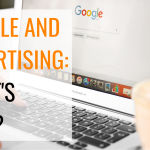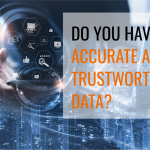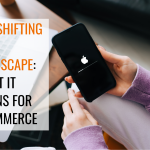For years, marketers and businesses have relied on third-party cookies to collect relevant information and understand online buying behaviors. But as awareness of data misuse and data breaches have increased, so have calls for data protection. Anxious to do the right thing (or in some cases, to be seen to be doing the right thing!), legislators and big businesses alike have been busy taking steps to put data protection standards into place.
Tech giants have made disruptive changes when it comes to online user tracking. Recent updates that have sent shockwaves through the marketing world include Google’s privacy changes, including killing off third-party cookies and Apple’s App Tracking Transparency update. These changes are causing huge shifts in digital marketing, sending businesses scrambling to find other ways to advertise or to get that all-important customer data.
While third-party data has been the easiest and most common way to understand user behavior, this method does have its flaws. And risks, as we’ve seen in recent years.
“For example, several years ago, Facebook used to share vast amounts of data through their API,” explains Meaghan Connell, CEO and founder of Praxis Metrics, a company that helps ecommerce stores turn data into growth.
“This data included deep insights on customer demographics,” she continues. “Advertisers could connect to the application programming interface (API) and gain granular insights regarding their ads, the Facebook users that saw those ads, and be able to do in depth analysis on which segments they should target in the future.”
This worked well for a while, but it wasn’t to last.
“As data privacy laws were set in place, Facebook removed several columns from their API,” explains Connell. “That meant that deep data and insights that had always been possible, were instantly lost. Over time, more and more regulations have decreased the amount of data that is easily accessible and shared by third party software providers.”
Connell says that this demonstrates how, in the blink of an eye, companies could lose valuable insights into the platforms and strategies they use to drive their business.
In this new era of digital marketing where companies are jumping on board the privacy-first bandwagon, investing in first-party data is going to be the way forward. Unlike third-party data, first-party data is information that’s collected firsthand from your customers, so it’s yours.
You’ve obtained it, you own it. There’s also a very good chance that it’ll be more accurate and relevant too. This data can be used to create and segment customer profiles, improving your marketing strategy and the buyers’ journey.
The good news is that customers are still willing to share data with businesses, as long as companies are transparent about it and will use it responsibly to improve their buying experience.
In this article, let’s talk about why you should integrate first-party customer data into your ecommerce strategy and what you can do to start.
Benefits of First-Party Data for Ecommerce Stores
Before jumping into the benefits of first-party data for ecommerce, let’s have a quick look at the other types of user data:
Second-Party Data – Second-party data is first-party data from a trusted partner. It gives companies access to complementary information that they otherwise won’t have access to alone. It’s basically someone else’s first-party data, which is usually more relevant than third-party data. An example of this data is a publisher of a sports blog who may collect and sell visitors’ information to an online sporting goods store.
Third-Party Data – Third-party data is usually sourced from large, third-party data providers that specialize in aggregating and anonymizing data. Data quality and data accuracy may be a problem because it doesn’t come directly from your own audience and additional data collection from other sources may still be needed.
Amazon is a great example of how a company can employ a first-party data strategy to scale. Amazon encourages visitors to sign up and create accounts, and they use these user account information and site behavior to provide highly targeted ads and recommendations. They also provide a lot of value for Amazon Prime members: free shipping, Prime Day exclusive discounts, and access to Prime Video.
(Source: Neil Patel)
It’s clear that first-party data is a secret weapon for creating targeted advertising and content that resonates with customers.
Here are other benefits of a first-party data strategy:
Reduces Cost of Customer Acquisition
First-party data can also be used for “remarketing” or “retargeting.” It can be used to take data points from customers’ past interactions and behaviors with your brand, making it easier to tailor-fit offers. It’s easier to keep (and five times less expensive) to retain your existing customer base than to acquire new ones.
According to one report by BCG and Google, businesses using first-party data for marketing activations saw 1.5x – 2.9x higher revenue boost and 1.5x increase in cost savings versus companies with limited data integration.
Highly Targeted Marketing Campaigns
Forrester Research says that online marketing messages will jump up to 40% this year. The need to engage with your customers will be more important than ever and you don’t want people to scroll past your ads or mark your emails as spam. Marketing campaigns that are engaging and personalized have higher chances of resonating with your target audience and converting into sales.
Improves Brand Loyalty
Highly personalized experiences drive brand loyalty and revenue. Peter Reinhardt, CEO of Segment, tells Forbes, “Shoppers expect brands to remember who they are, whether they’re on a digital channel or in-store. However, very few companies can actually deliver on these tailored experiences.”
First-party data helps you understand what your customers want, allowing you to match their intents and needs. When using third-party data, that isn’t always possible to achieve because the quality, accuracy, and uniqueness of information can be a problem.
Product Forecasting and Inventory Planning
First-party data is rich with audience insights that can help you forecast trends and ensure your inventory is always stocked with your best-sellers.
Collecting First-Party Data
Types of First-Party Data
Before we dive into strategies on collecting first-party data, let’s take a quick look at the different types and sources of first-party data:
- Website or App Data – Behavioral data collected from your own website or app
- Email and SMS Information – Information from users who have opted into receiving communications from your company; you can gain audience insights from email opens, clicks, and conversions events
- CRM (Customer Relationship Management) and Point of Sale (POS) Data – Purchasing history and data from CRM and POS systems give you insight into buying patterns and behaviors
- Help Desk/Call Center Data – Questions and messages directed towards your customer support team
- Customer Feedback – Post-purchase customer reviews and testimonials
- Data from Loyalty Programs – User accounts and loyalty programs give you additional customer data to create personalized offers
- Survey Data – Data from surveys or forms on your website or gathered through your email newsletters
Now, here are some tips on how to collect first-party data from your own audience:
Add Tracking Pixels
Tracking pixels are tiny, 1×1 size pixels installed in websites to collect data from on-page user habits. Pixels can track:
- Conversion events
- Website purchases
- Newsletter signups
- Link and ad clicks
- Viewed pages
- Time spent on a page and on the entire website
The difference between a third-party cookie and a tracking pixel is that cookies exist in the browser and can be cleared or disabled. Tracking pixels are native to your website, allowing you to capture data from visits even if cookies are disabled. You can use tracking pixels on your product pages and landing pages and connect them to your social media advertising to do targeted ads.
There’s Google Tracking Pixel, and most social media platforms allow you to add a pixel to your website. There’s Facebook Pixel, LinkedIn Insight Tag, Twitter Pixel, TikTok Pixel, and Pinterest Tags.
Use Chatbots
If you’re struggling to stay on top of customer service emails and social media DMs, consider using chatbots to streamline your customer service efforts. This lets you easily capture first-party data points and you won’t lose any leads and information from customers. Even if your chatbot won’t bring in a sale, you’ll get ideas of what customers need.
Create Value in Exchange for Information
As mentioned earlier, many people are willing to share their data in exchange for something valuable. Incentives can be discounts, a free gift, or valuable, exclusive content. Provide value by offering incentives in exchange for:
- Creating a user account on your website
- Downloading your app
- Signing up for email newsletters
- Answering surveys or feedback forms
Uniqlo offers welcome coupons for email sign-ups and app downloads:
(Source: Uniqlo)
Engaging Newsletters
Email lists are one of the best ways to communicate with your customers and prospects. You get to deliver value straight to their inboxes and in turn, gather your own data on what gets them to click and convert.
Pro Tip: Be mindful of the number of emails you send. Try to send more educational emails than promotional emails, which customers may find overly aggressive and spammy.
User Accounts on Website
Ecommerce platforms (and plugins) like Shopify, Squarespace, and WooCommerce allow online shop visitors to create customer accounts. A user profile helps you collect data that you can use to improve their on-site experiences, such as keeping a favorites list, saving a cart, or showing recommendations based on past purchases or site behavior.
Pro Tip: Reduce friction during the user registration process by implementing a Single Sign-On (SSO) system. This allows customers to use their social media or Gmail accounts to create accounts easily on your website.
Customer Loyalty Programs
Len Covello, CTO of Engage People, tells Forbes, “Data is the lifeblood of any personalization program, and a loyalty program provides the building blocks. Brands that have strong loyalty programs have a roster of customer data from which they can tailor approaches.”
Knowing how to use data is the key to delighting customers. Adidas segments customers based on their email list and EasyJet uses customer data from user profiles to create personalized content for their customers, like this one:
gn_optin title=”Building First-Party Data – Worksheet” media_download_id=”3645″ submit_text=”Get the worksheet!”]
(Source: Campaign Live)
A loyalty program is also a powerful retention tool. Mastercard says that when cardholders get personalized offers, they see an 18% spend lift from those who redeem and a 75% reduction in churn.
Surveys and Lead Generation Forms
Surveys are a great way to lean into what your audience is feeling and see how they perceive your brand and products. You can easily create survey forms for free with SurveyMonkey, Typeform, or Google Forms. Remember to seek information that’s relevant to your business and avoid questions that are too personal.
Progressive Profiling
Asking for too much user information right off the bat might scare off customers or lead them to not complete user registration forms or surveys. Progressive profiling is the collection of customer data over a period of time, allowing you to build deeper customer profiles. For example, you can ask for additional questions or data such as birthdays or other preferences after repeated account log-ins or purchases.
Onboarding Your First-Party Customer Data
First-party customer data can either be online or offline data from different channels. Integrating all your data and creating customer profiles are the next steps to make it usable for your marketing strategies. This is called First-Party Data Onboarding and there are onboarding platforms that anonymize, encrypt, and streamline your data to remove any Protected Personal Information (PPI) and make it ready for interpretation.
Customer Data Platforms or CDPs allow you to easily combine customers’ names, addresses, contact numbers, and transactional information from your offline sources or CRM systems with online data points such as web page analytics, user account information, and email interactions. It shows you complete profiles of customers as individuals. LiveRamp, Signal, and Oracle OnRamp are some examples of data management platforms.
(Source: ClearCode)
After onboarding your audience data, you can segment your customers according to interest, demographics, or where they are in the customer funnel. This helps you tailor-fit your marketing strategy accordingly.
The Next Steps
Now that we’ve discussed how to collect first-party data, here are some of the things you can do right away to start implementing your first-party data strategy:
- Set your goals before collecting data. This helps you define your strategy and marketing plans. Your goals will also impact the type of data you collect and how you gather it.
- Determine the business questions you intend to answer with the collected data. It’s also important to be strategic with your data collection.
“It’s important to only collect data that you will take action on,” says Connell. “You can get caught up in spending too much time and money in tracking everything possible,” she says. “But if it’s not going to help you make better decisions in the future (to increase your revenue, or to decrease your expenses), it’s probably not worth investing in.”
- Be transparent when you collect data. Write your cookie policies in a clear, easy-to-understand manner. Consumer data is precious and you want to show users that you value their privacy by giving them control of their website and email cookie settings. Make it easy to withdraw tracking permission and to unsubscribe from emails.
- Highlight the reasons for data collection and tell them how it benefits their experience. Take a look at this example from Adidas:
(Source: Adidas)
- Democratize your data. “Once you have your data tracking in place, you need to share it with your team,” advises Connell. “All the tracking and collecting of data in the world does nothing for your business if it sits in the back of a system, or if it’s only accessible by the IT department or the founder of the company. The goal is to share that data with your team so that they can interpret it and use it in their role to create benefits.”
- Aggregate your data. Another tip from Connell is to aggregate your data to get a bigger picture view of what your customers are doing.
“Your goal is to have a more holistic view of your customers, their interests, their purchasing behaviors, and how to optimize their relationship with your brand,” she says. “If bits and pieces of this information are spread across multiple systems, it’s likely that you will not have the full picture, and that you will be operating on incomplete data.”
- Take action from your data. Finally, Connel says to educate your team on the value of these insights. “Taking action from data is the new competitive advantage,” she says. “Most companies can get data, but what they do with it separates the successes from the failures. Use the data to inform your marketing decisions, your pricing decisions, your product bundling decisions, and everything else you do in your business.” But remember, as Praxis Metrics says, “You can’t analyze data, if you don’t collect data,” so make sure you’re putting that step into practice and implement a plan to start collecting your own first-party data today.
“The goal is to turn data into information, and information into insight.” – Carly Fiorina, former executive, president, and chair of Hewlett-Packard Co.
So third-party data is out, and first-party data is in. Fortunately, there are a number of great strategies out there already along with tools that you can use to start collecting, and using, that data.
First-party customer data can be the rocket fuel you need to understand your audience and improve your revenue. Knowing what motivates your audience helps you connect and build relationships with them on a more personal level, helping you improve the way you deliver your products, ideally, leading to better sales and higher conversion rates as well.
Note: Thanks again to Praxis Metrics for contributing to this article. If you’d like to learn how to turn your data into explosive sales growth. Or, dive in and get expert help from a trusted data expert. Sign-up for a free data strategy session and get a free data roadmap.
Ready to scale your e-commerce business? Reach out today for your FREE 20-minute consultation call with me. Let’s find strategies that’ll help you to reach your big-picture marketing goals.
gn_optin title=”Building First-Party Data – Worksheet” media_download_id=”3645″ submit_text=”Get the worksheet!”]






